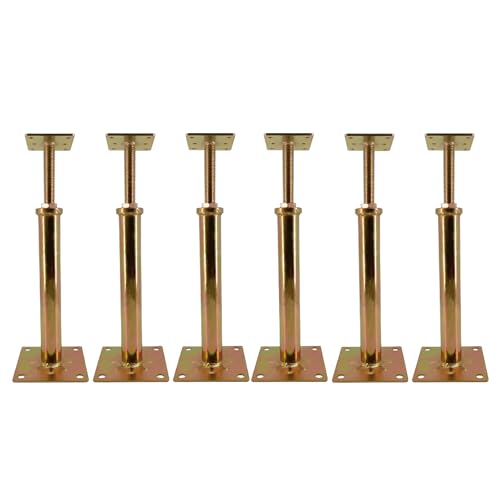
Consequences of a Broken Timing Belt Explained

If your timing belt breaks, your engine instantly stops working, leaving your vehicle undriveable.
You risk severe engine damage, especially in interference engines where pistons can collide with valves, bending or breaking them.
This often leads to costly repairs exceeding your car’s value.
Causes include worn belts, oil leaks, or faulty tensioners.
Timely replacement and regular inspections prevent sudden failure, preserving engine integrity.
 How to Tell If Your Timing Belt Needs Replacement
How to Tell If Your Timing Belt Needs ReplacementLearn how these failures happen and what maintenance you need to avoid them.
Table
- Main Points
- What Is a Timing Belt and Its Role in Engine Function
- Common Causes of Timing Belt Failure
- Immediate Effects of a Broken Timing Belt on Engine Performance
- Potential Engine Damage Resulting From Timing Belt Failure
- Importance of Timely Timing Belt Replacement and Maintenance
- Frequently Asked Questions
- Final Thoughts
Main Points
- A broken timing belt causes the engine to lose power and stop running immediately, making the vehicle undriveable.
- Loud, unusual engine noises often precede or accompany timing belt failure, signaling urgent mechanical issues.
- In interference engines, a broken belt can cause pistons to collide with valves, resulting in bent or broken valves.
- Timing belt failure can lead to severe internal engine damage, including oil leaks and costly repairs.
- Ignoring timely replacement and maintenance increases the risk of sudden belt failure and expensive engine damage.
What Is a Timing Belt and Its Role in Engine Function
A timing belt is a crucial engine component made of reinforced rubber that synchronizes the rotation of the camshaft and crankshaft. This synchronization guarantees the engine’s valves open and close at precise intervals, maintaining ideal engine function. Inside, the timing belt’s teeth mesh with gears on the camshaft and crankshaft, allowing exact control over valve timing. Over time, the timing belt will wear out due to constant stress and heat exposure, typically requiring replacement between 60,000 and 100,000 miles. Neglecting timely replacement risks belt failure, which disrupts synchronization and can cause serious damage—bent valves or damaged pistons—that compromise engine integrity. Understanding the timing belt’s critical role empowers you to maintain your engine’s performance and avoid catastrophic failures.
Common Causes of Timing Belt Failure

When you exceed the recommended mileage range of 60,000 to 100,000 miles without replacing the timing belt, you greatly increase the risk of failure due to material degradation. Common causes of premature breakage include exposure to oil leaks near the belt, which weaken its rubber composition, and overheating, which dries out and cracks the belt. Faulty components such as tensioners and pulleys impose additional stress, accelerating wear. Ignoring warning signs like unusual noises or persistent check engine lights can lead to serious damage. Recognizing signs of wear early and performing timely timing belt replacement liberates you from catastrophic engine failure. Vigilance against these factors allows you to maintain engine integrity, avoiding costly repairs and ensuring consistent performance.
Immediate Effects of a Broken Timing Belt on Engine Performance

Although it may seem sudden, a broken timing belt immediately disrupts the synchronization between the crankshaft and camshaft, causing the engine to lose power and cease running altogether. When the timing belt breaks, your engine fails instantly, rendering the vehicle undriveable. You’ll notice clear symptoms like unusual sounds—often loud clicking—and a complete inability to start the engine. Ignoring these signals and attempting to drive with a broken timing belt risks serious damage and costly repairs.
- Engine power drops to zero without warning
- Vehicle becomes undriveable immediately
- Loud, unusual engine noises signal failure
- Ignoring symptoms leads to expensive repairs
To avoid this, regularly replace your timing belt before failure compromises engine performance and freedom on the road.
Potential Engine Damage Resulting From Timing Belt Failure

Experiencing a broken timing belt doesn't just stall your engine—it can inflict severe internal damage. In interference engines, the failure causes the camshaft to halt while the crankshaft keeps turning, forcing pistons into open valves. This collision results in bent or broken valves, causing serious damage to the engine’s valves, pistons, and cylinder heads. Such impact often leads to oil leaks, complicating repairs and escalating costs. Repairing this damage frequently involves extensive replacement of multiple engine components, sometimes exceeding the vehicle’s value. If your timing belt breaks, you face urgent, costly repairs or even complete engine replacement. Understanding these risks empowers you to act decisively, protecting your engine’s integrity and avoiding catastrophic failure.
 What Is the Average Labor Time for Timing Belt Replacement?
What Is the Average Labor Time for Timing Belt Replacement?Importance of Timely Timing Belt Replacement and Maintenance

Since timing belts endure constant stress, replacing them every 60,000 to 100,000 miles is crucial to prevent sudden failure and avoid catastrophic engine damage. Neglecting timely maintenance can lead to serious damage, compromising your car’s core functions. You must stay vigilant for signs such as misfiring, loss of power, or unusual noises—these often signal declining engine performance linked to a worn timing belt. Regular visual inspections help detect cracks, fraying, or wear before consequences escalate. Additionally, avoid oil exposure; oil weakens the belt’s integrity and accelerates failure. By adhering to manufacturer guidelines and performing consistent maintenance, you liberate yourself from unexpected breakdowns and costly repairs.
- Protect your engine’s longevity
- Detect early warning signs
- Prevent expensive, irreversible damage
- Maintain peak car performance
Frequently Asked Questions
What Damage Does a Broken Timing Belt Do?
When your timing belt breaks, expect engine damage from valve collision, driving up repair costs. Knowing timing belt materials, inspection intervals, and maintenance tips empowers you to choose replacement options and preventive measures, preserving engine performance and avoiding failure signs.
What Happens if You Keep Driving With a Bad Timing Belt?
Like a ticking time bomb, ignoring your timing belt’s warning signs jeopardizes engine performance and increases driving risks. You risk severe engine damage, higher repair costs, and compromising vehicle maintenance—prompt replacement preserves your freedom on the road.
How Does a Car Act When the Timing Belt Breaks?
When your timing belt breaks, you’ll experience engine stalling, loss of power, odd noises, misfires, warning lights, overheating issues, poor acceleration, and rough idle—all indicating severe engine damage requiring immediate attention to avoid catastrophic failure.
Is It Worth Fixing a Car With a Broken Timing Belt?
With repair costs ranging up to $3,000, you must weigh engine replacement against your car’s age and vehicle value. Rely on mechanic expertise, consider timing belt lifespan, warning signs, repair frequency, preventative maintenance, and resale implications before deciding.
Final Thoughts
If you neglect your timing belt, you risk severe engine damage—remember, "a stitch in time saves nine." When it breaks, your engine's synchronization fails instantly, leading to costly repairs or total engine failure. By understanding its critical role and replacing it on schedule, you safeguard your vehicle’s performance and longevity. Stay proactive with maintenance to avoid unexpected breakdowns and preserve your engine’s integrity.
 Why Replace Your Toyota Camry Timing Belt?
Why Replace Your Toyota Camry Timing Belt?Reliable Floor Jacks on a Budget: Best Picks for Under $150
Top-Rated Floor Jacks Over $100: Built for Professionals, Priced for Smart Buyers
If you want to know other articles similar to Consequences of a Broken Timing Belt Explained you can visit the Timing Belt Care and Replacement category.
Leave a Reply






































This is also interesting